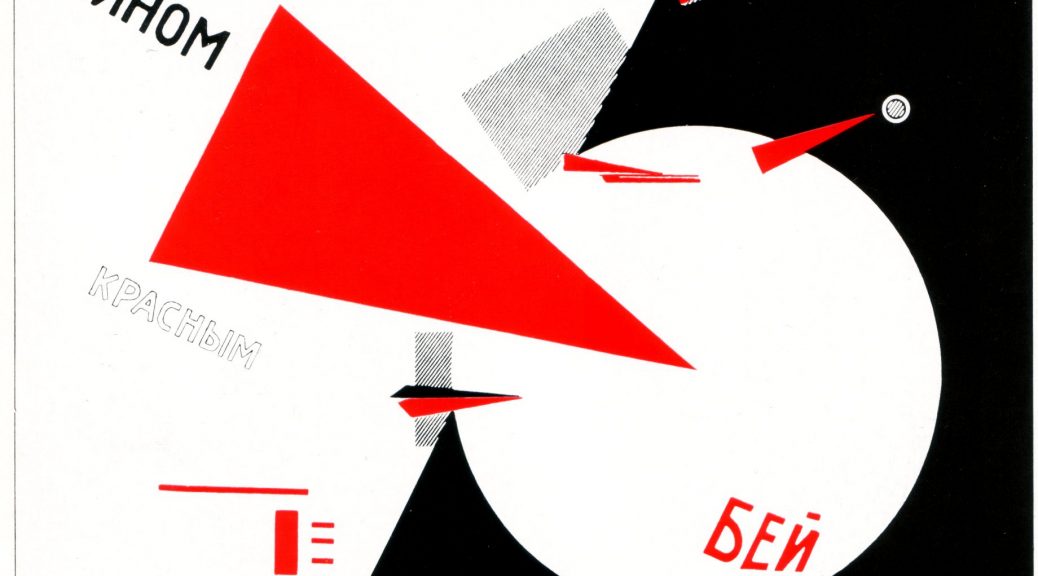We call ourselves Communists. What is a Communist? Communist is a Latin word. Communis is the Latin for “common”. Communist society is a society in which all things – the land, the factories – are owned in common and the people work in common. That is communism. – V.I. Lenin, The Tasks of the Youth Leagues
The Transition from Socialist Revolution to Communism. On the Tasks of the Workers State in the Transition to Equality and Stateless Society
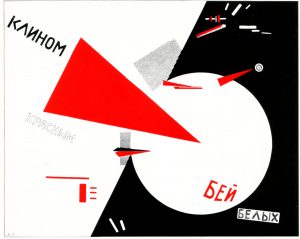
Greetings Comrades. In our socialist struggle we must prepare for the future struggle and the victory of our working class. The question of the state immediately arises and is of fundamental importance in determining our strategy. So what is the state? Marxist Leninists assert that, in essence, the state is an apparatus of repression serving the interests of whichever class it is that dominates – that is, rules over – society. This power – this state machine – that arises out of the ruling class’ need to oppress their rival class places itself above society and alienates itself more and more from it. [28]
Under capitalist rule, the ruling capitalist class has built up its mighty capitalist state machine – which at its core consists of the police, courts, prisons, legal institutions, army and other bureaucratic institutions – to preserve their class rule over the working class via oppressive means. Therefore, in order to even begin the task of moving towards an egalitarian communist society, the first step for the working class is to overthrow this oppressive capitalist state. If we are to then help guide humanity to communism, we as Marxist Leninists believe it is a fundamental strategic necessity to establish a workers’ state after this overthrow of capitalism.
But what is communism? Communist society is one where the toiling classes are completely liberated from the yoke of capital, where there is full equality, no classes and, thus, no need for an oppressive state at all. The capitalist system of poverty, unemployment, wars, racism, sexism and homophobia will be no more. People will receive according to their need and give according to their ability. Economic, productive and creative achievement would be at its utmost, fullest potential. There will be no government/ state to manage/administer the affairs of the community as the individuals that compose the masses will manage their own community affairs with a self-determined and community-motivated spirit and culture.
Most groups in the Marxist and anarchist Left tend to share this vision of a future communist society. However, there is a controversy between the different tendencies of the left about how we actually get to communism.
The three main left wing tendencies are the social democrats, the anarchists and the communists (Marxist Leninists). The social democrats, even those that truly believe in fighting for socialism, act on the premise that they can reform capitalism into socialism without overturning the current capitalist state structure. The social democrats deny needing to overthrow the current capitalist state.
In Australia the left wing of social democracy is made up of nominally far-left groups like Socialist Alliance, the Communist Party of Australia, Solidarity and Socialist Alternative. These groups claim adherence to Marxism and Leninism (and even sometimes claim to be revolutionary) but in their daily activities and stances on current political issues tend to promote illusions in the current capitalist state and, specifically, the illusion that pressure can be maintained upon the institutions of the capitalist state in order to successfully force them to play a more progressive role.
In contrast to the social democrats, the best of the anarchists of the Anarcho-Communist and Anarcho-Syndicalist perspective just like Marxist Leninists understand the need to overthrow the capitalist state to open the road to communism. Over the last few years in Sydney, Australia, Trotskyist Platform has been engaged in various united front campaigns with certain militant class- conscious anarchists (who too are quite varied). These campaigns have been various on the street struggles such as campaigns against racism and for public housing rights. We have found that some of these anarchists have been very dedicated to oppressed people’s struggles and often have been very courageous. Some of the most pro-working class and determined of the anarchists have been in the vanguard of organising important anti-racist actions such as the recent anti-fascist action in Cronulla on the 10th anniversary of the horrific white supremacist riot there. Notably, both communists and the best of the anarchists share ideals of a stateless, classless, egalitarian society; we have the same ideological determination to oppose class and racial oppression, capitalism, poverty, unemployment and homelessness; we share the same hatred of the bourgeois exploiters, of the capitalist state institutions and of the far-right enemies of the working class. However, on the practical and strategic questions of how we achieve revolution and then defend it, Leninists and even the most left-wing and pro-working class of the anarchists fundamentally differ.
In the fight for the revolution Leninists insist that we need to establish a revolutionary workers’ party to bring revolutionary consciousness to the masses and lead the revolutionary struggle to a successful conclusion. Anarchists reject the idea of the workers party. Leninists also insist that after the revolution we require a workers’ state which, in the interests of the working class, will defend the revolution and facilitate the progress to communism. However, the anarchists outright reject the need for a workers’ state or a party to lead the transition from a workers’ revolution to communism. They, unfortunately and quite falsely, believe it is possible to skip to a stateless society immediately after the overturn of capitalist rule.
A Young Revolutionary Society
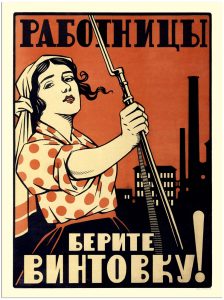
After the workers’ revolution, the working class will now be the new authority and power. The capitalist state– that machine designed to keep the masses down and the rich in power – will have been thoroughly dismantled and the exploiters heavily defeated. It will be the birth of a new world. But is this the end of the struggle? Do we just lay down our guard and declare that communism has been achieved? Or will we – somewhat more realistically – say that, though it is still distant, communism will eventually and inevitably be achieved without the need for a new workers’ state to ensure its progress? Many anarchists do believe this to be the case. Furthermore, can we actually wipe out the power of the capitalists – built up over many centuries – in one go? Especially when, after the socialist revolution, the capitalist rulers still in power around the world would fight tooth and nail to help their deposed capitalist brethren destroy the newly established authority of the revolution? Can we abolish the hundreds of years of capitalist thinking and cultural conditioning overnight? To all these questions, Leninists say “No” and we will explain why below.
Economic Control
The biggest triumph of the workers’ revolution will be the seizure of workplaces, factories, infrastructure, housing and land from the control of the capitalists. Indeed, this is both the beginning and the end of the revolution as more and more of the economy – starting with, most importantly, its commanding heights – becomes collectivised. We must make sure that the means of production – the engine house of any society – are run by the workers and the workers’ councils.
However, this task of seizing the means of production will be resisted not only by the capitalists but also by some petit bourgeois and reactionary layers (which could include small businessmen, supervisors, managers and some of the highly paid technical workers as well as former cops, spies and military officers who would have spent their whole adult life defending capitalist rule) and even some ordinary workers who are still close to the bosses. Therefore, the task of collectivisation cannot simply be performed by the self-activity of the entire people (even the entire non-capitalist people). It will need to be performed by the defence organs of the revolutionary workers – that is, by a workers’ state.
Dealing with the Capitalist Class and Counter Revolution
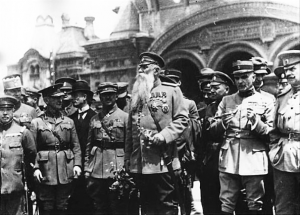
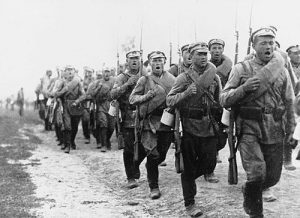
We must be on high alert after the workers’ revolution for the former exploiters will still have plenty of money, the networks, the connections, the knowledge and the expertise to inflict harm upon the fledgling, socialist society. We can have no doubt about it: these vestiges of the former ruling capitalist class will agitate for a counter-revolution.
It is exactly for this reason that, immediately after the revolution and defeat of the reactionaries, it is paramount that we are ready to defend the revolution. Precisely because they cannot exploit the working class like they used to, the layer of extremely wealthy bourgeoisie, though bruised and dispossessed of a large part of their wealth, will be itching for counter-revolution. Because the bourgeoisie internationally are very well connected the threat may very well come from abroad. Back at home, the more right wing of the middle classes, wedded as they are to the very idea of private property, as well as many of the former henchmen of the capitalists – including both the armed personnel of the former capitalist state’s police and military organs and the capitalists’ former workplace enforcers (i.e. higher up managers and foremen) – will also be seeking ways to undermine the revolution at every turn. This is why the working class must build a workers’ state to defend the revolution and suppress a resurgent and desperate capitalist class along with all of its reactionary allies.
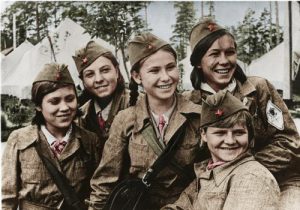
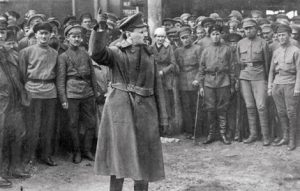
In this picture, founder of the Soviet Red Army, Leon Trotsky, motivates troops in 1918 during the bloody Civil War against insurgent armies attempting to restore capitalist power.
The very idea of a socialist or workers’ state often comes as a shock to many left-liberals, pacifists and anarchists. Understandably, the word “state” has negative connotations in the context of feudal and capitalist societies. The anarchists are right to regard the state in this present capitalist society as an oppressive bureaucracy and authority that brutally crushes the First Nations people, attacks striking and picketing workers and sponsors troops to fight ruthless capitalist wars abroad. It is absolutely natural that a proletarian or oppressed or exploited person has a healthy hatred of the state and authority in today’s capitalist society. However, the future workers’ state will embody the living, fighting force of the formerly oppressed and exploited masses and will, inherently, act in a way that is diametrically opposed to the actions of a state set up to serve a rich, capitalist and exploiting ruling class.
We ask the anarchists or the left-liberals: which class will be administering the workers’ state? For whose benefit will the workers’ state operate? The proletarian majority or the bourgeois minority? In fact, the socialist workers’ state will be nothing like the current capitalist state that we know all too well. In place of arresting picketers and strikers, harassing homeless people, kicking out single mothers who are behind on their rent or oppressing minorities the workers’ state will, instead, crush racists and ban hate speech, massively increase public housing, further advance the seizure of empty dwellings owned by the wealthy so that they can be used to house the homeless and needy, organise the economy to ensure full employment and, most importantly, continue socialising and collectivising the means of production. In other words, the working class will be dictating to the overthrown capitalists and their allies via the power of the workers’ state. We do not recoil from this word: the workers’ state will, indeed, be a dictatorship of the proletariat. It will be the liberator of the toiling and oppressed classes and become the primary means of defending the working class from counter-revolution, the conspiracies of the bourgeoisie and all the influence that they can still muster both at home and overseas. Perhaps most importantly of all, it will also serve to facilitate the masses’ march towards communism.

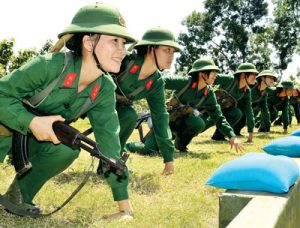
For World Socialist Revolution
When a workers’ revolution is victorious in one country, attention must soon turn to fellow workers in other lands who may not be as fortunate. They will still be suffering under the capitalist yoke or undergoing the struggle to overturn capitalism. We should, therefore, ensure that we support other socialist revolutions around the globe. The very act of defending the revolution at home will be viewed by the international bourgeoisie as an act of aggression against world capitalism and quite rightly so! Hand in hand with defence – in fact, its very corollary – is the possibility of the workers’ state engaging in strategic offensive campaigns.
When supporting international revolution, we will need to demonstrate the utmost respect for the plight and the national aspirations of peoples abroad in order not to frighten the workers of these other nations – especially if they are already living under colonial or neo-colonial oppression – into thinking that we are yet another exploitative or oppressive force. Our main means of solidarity support to struggles overseas will be propaganda and an ideological internationalist perspective. But we must not discount direct military support of international revolutions via volunteer and professional armies where required to assist the liberation of fellow working class people when they are in the midst of direct revolutionary combat with their capitalist enemies. We need a workers’ army and a workers’ state not only for the immediate defence of the revolution at home but also to assist revolutions abroad. This is not only in line with our communist ideals of internationalism but, also, essential in guaranteeing the defence of the revolution at home.
The Middle Class Masses: Friends or Foes?
Fighting to support socialist revolutions abroad can be complicated. And the fight to stop the inevitable counter-revolutionary efforts of the overthrown capitalists will be a difficult task. Nevertheless, the methods and strategies required for these tasks are quite clear cut. A much more complicated and nuanced task will be integrating the far more numerous petit bourgeoisie – the so-called middle classes – into the new socialist society. What Marxists refer to as the petit (or petty) bourgeoise is that class of the population who are generally neither exploiters of labour nor wage workers directly exploited by capitalist business owners. Included in this intermediate class are self- employed plumbers, electricians, gardeners, farmers, artists and craftspeople and self-employed grocery, small restaurant, repair shop and hairdresser owners as well as doctors, dentists, accountants and other consultants of various types with their own private practice. Their income may range from that of the very poor to that of the very comfortably well-off. Although not enduring direct exploitation of their labour by capitalists, some of these petit bourgeois layers, to a greater or lesser extent, suffer under the capitalist system – from bullying by the banks, from brutal competition with big monopolies, from the greed of big landlords and the wild economic swings and chaos of the capitalist “free market.” On the other hand, their means of deriving an income induces many petit bourgeois people to have a capitalistic and individualistic mentality. Many dream of turning their small, self-employed businesses into bigger businesses that hire and fire exploited labour. That is, they dream of becoming capitalists. Hence, the petit bourgeoisie, both as a class and as individuals, can swing wildly between the two poles of supporting the working class and supporting capitalism. Historically, the proletariat in significant part arose from the dispossessed members of this class who – out of the pure needs of survival – gathered around the lathe and anvil, the loom and production line of modern industry to form a new, proud and powerful class – the proletariat – whose destiny is, indeed, to usher in communism. [29] During the struggle against capitalist rule, the Marxist strategy is to seek to win over as many of the petit bourgeois to the side of the working class and the struggle for workers’ revolution as possible. We will, in particular, appeal to the poorest and most oppressed sections of the petit bourgeoisie while ensuring that their capitalistic and individualistic tendencies do not infect the revolutionary workers or divert them from their ultimate goal of a society based on common ownership of the means of production.
After the socialist revolution, the ruling working class will seek to maintain the support of those sections of the petit bourgeoisie that did support or, at least, accept the revolution. On the other hand, there will also be some sections of the petit bourgeoisie who will fanatically oppose the revolution, all because of their devotion to private enterprise and their personal closeness to – and even fawning worship of – the big time capitalists. Therefore, after the workers’ revolution, the counter-revolutionary efforts of these middle class layers will need to be stopped. Furthermore, to the extent that they remain self-employed people engaged in private enterprise and not employees of socialist public enterprises, even many of those petit bourgeois people who accept and even support the revolution will still be infused with a selfish, hustler-type mentality.
This outlook, though essential to surviving the cut and thrust of the daily dog eat dog environment of a capitalist economy, becomes outright dangerous to the unity of a collective economy run for everyone’s mutual benefit in a society where trust between and kindness towards one’s fellow workers is of paramount and vital importance. The petit bourgeoisie’s support for the revolution needs to be nurtured and any positive qualities individual members of this intermediary class may possess should be harnessed for the good of the new socialist society. But any tendency towards harmful profiteering, hoarding and speculating from petty bourgeois business people will need to be put under the watchful eye of the revolutionary society and, if necessary, firmly stopped in its tracks. If not checked in time, such dubious economic activity will inevitably corrode the socialist economic sector.
The socialist revolution itself will win many petit bourgeois individuals to a more collectivist, community-minded outlook and later so will the emerging socialist culture of the new revolutionary society. However, as long as those who were petit bourgeois before the revolution remain self-employed business owners afterwards, their economic reality will still push many of them back towards an individualistic, hustler-type view of the world and social relations. This problem is all the more significant because, while the workers’ revolution will forcibly seize and collectivise the means of production owned by the big capitalists, it will not forcibly collectivise the business owned by petit bourgeois self-employed people and may not even forcibly nationalise all the business owned by the smallest of the capitalists. This is not for any moral reason or principle – far from it. Rather it is to avoid a massive revolt that could threaten the hard- won revolution. Unlike the relatively few big capitalists, the smallest-scale capitalist exploiters together with the petit bourgeoise make up a relatively large proportion of the population – in Australia a bit less than 25% of the entire workforce. [30] Therefore, a young revolutionary society will consist of not only masses of revolutionary workers and a tiny number of overthrown big capitalists as well as a small number of their former state and workplace henchmen but also a large number of petit bourgeois individuals, some sympathetic, some hostile to the revolution but most still infected with an attachment to private profiteering and all the social backwardness that this brings (though there will, of course, be some petit bourgeois people who will be able to completely turn their backs on their old outlook and the best of these will even become valuable members of the revolutionary workers’ party).
This existence of a large petit bourgeois layer in a young revolutionary workers’ society was a major difficulty that the Soviet Union faced in the first decades after the October 1917 Russian Revolution. At the time of the 1917 Revolution, Russia was a backward, mainly agricultural society which, thus, had a relatively small proportion of wage workers and a larger number of self-employed peasant farmers. The peasants were, in fact, largely sympathetic to the workers–led revolution because it freed them from the burden of having to pay a large proportion of their income/produce as rent to greedy big landowners. However, at the same time, the relatively better off peasants in particular had a strong attachment to private ownership of productive land and were infused with a profiteering, individualistic outlook.
Ultimately, the petit bourgeoise can only be fully integrated into a socialist society through their gradual evolution into proud employees of socially-owned enterprises – that is, by turning them into proletarians. This will be achieved through a variety of pathways. The society will offer incentives to small self-employed producers – like cheaper credit and free equipment – to amalgamate into bigger and bigger cooperatives and eventually into large scale collectives. In other cases, large, efficient state-owned enterprises will compete with the petit bourgeois small producers while at the same time offering good wages and guaranteed and generous leave entitlements (something that many of the struggling petit bourgeois shopkeepers currently do without) to entice individual producers into becoming employees of these enterprises. The publicly owned enterprises may also offer special incentives for self- employed rivals to sell off their equipment to the public enterprises, abandon their businesses and become well-paid employees of a socialist enterprise instead.
In dealing with small-scale capitalist exploiters of labour – as opposed to those who are strictly petit bourgeois and use no hired labour at all – the revolutionary workers’ society will have to use other means at its disposal to make it ultimately more profitable for these people to abandon their businesses and, hopefully, themselves move into well-paid jobs in the socialist sector instead. Today, these small-scale capitalists often exploit their workers with even more ruthlessness than the large scale capitalist monopolies do. After the revolution they will be forced to improve the wages and conditions of their employees and this would gradually drive down their profits. In part, the wages and conditions of their workers would be improved via workers’ state law and regulations. More importantly, their employees would, as the collectivised economic sector develops, be able to find jobs with much better pay and conditions in the socialist sector. This last factor will force the small-scale capitalists to either improve their workers’ own conditions or, as is inevitable in the long-run, be themselves swept up in the tide towards the socialist economy.
Although the above carrot and stick measures would entice many petit bourgeois people to happily move into the socialist economic sector, some would be mildly or deeply resentful at being economically compelled to move away from self-ownership of their businesses. Similarly, some amongst the petit bourgeoisie, while being grateful to the revolution for freeing them from the tyranny of capitalist banks, monopolies and big landlords would be unhappy at moves to curb any profiteering/hoarding/speculative practices on their part. Therefore, all these tasks related to guiding the petit bourgeoisie with a firm but sympathetic hand cannot simply be carried out by the self-activity of the entire population as the petit bourgeoisie, themselves, compose a significant proportion of that population. The job of guiding the petit bourgeoisie will, thus, need to be carried out by a state dominated by the active working class. To be sure, a workers’ state would gradually draw in more and more of the petit bourgeois masses into the administration of the state. However, the petit bourgeois class would not have the same representation in the soviet councils as the working class, not until the petit bourgeois individuals, as they are gradually integrated into the collectivised socialist economy, themselves become active constituents of the proletarian ruling class.
Proletarian Democracy
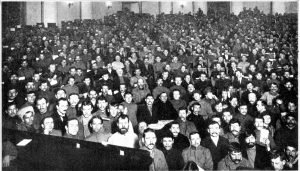
The proletarian state will be a million times more progressive than the previous capitalist state where only the exploiting few were really represented and the vast majority were simply ruled over. For the first time there will be a state serving the interests of the majority – working class people – not the interests of a tiny few exploiters. Since it will be a state serving the majority of people, a workers’ state will be far less alienated from society as a whole than a capitalist state is.
The revolutionary workers will be directly administering their state via workers’ soviets – which in Australia, Aboriginal workers and Aboriginal activists are destined to play a prominent role in from the get go. These soviets will from the time of their formation prior to the revolution, include not only workers but the most downtrodden layers of the non-worker masses – including the unemployed and low-income single mothers. Over time, the soviets will draw in wider layers of the masses (such as students, pensioners and certain layers of the petty bourgeoisie who have been won over to communist ideals). These workers’ councils or soviets – bodies of organised workers elected democratically – will be the primary voices determining the tasks of the workers’ state. In a workers’ state, with the key productive centres of capitalism having been taken over by the working masses, the industries and lands that were once run at the behest and for the profit of the rich bourgeoisie will now be under the control of the proletariat and will serve the interests of all of the formerly oppressed sections of society. This is, in essence, the nature of proletarian democracy. For communists, our democracy is about engaging the masses in direct participation of political administration starting from the workplaces. This is not so much a “grassroots” approach as an entire branch, trunk and roots engagement of the working people in the running of their society. This is in complete contradiction to the way capitalist “democracy” works in a capitalist state where every few years a handful of officials, predictably drawn from the same bourgeois political class, are elected to administer the state and regulate the capitalist economy and whose number one job it is to grease the wheels of capital – a truth that is at best ignored and at worst deceitfully covered up by the social democrats.
Combating Capitalist Ideology
One of the biggest problems facing a newly formed socialist society and its goal of successfully operating a system based on proletarian democracy is that we begin our long, happy march towards communism handicapped by a certain cultural deficit. For centuries the masses have been subjected to capitalist modes of thinking: a middle class type of profiteering, hoarding, speculating and exploiting mentality. In addition, backward, reactionary and divisive religious and nationalist ideologies flourish in competitive man-vs-man capitalist societies. These backward ideologies are also consciously promoted by the exploiters to divide and divert the masses from proletarian consciousness. After hundreds of years of feudalist and capitalist thinking pervading our culture, philosophy and even our language itself, one of the major tasks of the new socialist society will be to culturally uplift society. The vanguard of the victorious working class will need to gradually nurture and promote a collectivist spirit and internationalist perspective. For, although the consciousness of the masses would have necessarily surged forward during the revolution (or else there would have been no revolution to speak of!) there will, indeed, still be many people stuck in a very backward mindset.
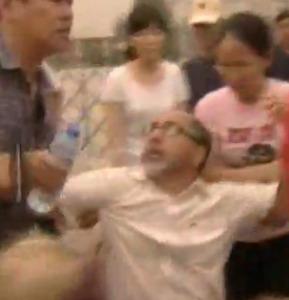

Already facing the intense military, economic and political pressure of the capitalist powers, the socialistic PRC does not need to have to put up with intrusion from the ultra-right wing of imperialism represented by the likes of the Christian Democratic Coalition and Operation Rescue.
Through the fundamental process of the socialisation of the land and industries in the new society and with more and more people engaged in truly productive and rewarding collective labour, a new communist culture will, of course, naturally begin to form in its embryonic state amongst the masses. In this way, an economic system based on collective ownership and production for the common good becomes the very springboard for creating a new communist society.
However, we quickly come to a chicken or egg type of conundrum as the successful operation of collectivised industries itself requires the existence of a collectivised spirit amongst the workers. If we had a small team operating in a collectivised enterprise and individualistic ways persisted in the workplace then this would greatly undermine operational productivity, efficiency and workplace cohesion. Therefore, the new society will need to consciously promote and propagate a collectivist spirit in the masses.
With significant layers still infected with the old capitalist ways of thinking, the population as a whole (and not even the entire non- capitalist population) will not be able to automatically carry out this important job of instilling in themselves and in society in general an effective, genuine and steadfast communist spirit. It will take a state under the control of the conscious layers of the working masses – that is, the revolutionary workers and especially the millions who actively participated in the revolution – to bring all the masses up to communist consciousness. By conducting education within the workplace and schools and through guiding the production of a progressive media and cultural space, the workers’ state will be able to encourage the masses to turn away from the ages old and cynical, individualistic dog eat dog mentality toward a friendly, sisterly and brotherly collectivist spirit that is truly fit for a communist future.
Role of the Party
Bringing the masses to communist consciousness cannot be done without a revolutionary workers’ party. For, although the workers state will be directly administered by workers’ councils of millions upon millions of revolutionary workers, all these workers will necessarily have differing levels of consciousness. We need a party that is based upon the most politically energetic and forward thinking layers of the working class. This party will be the source and inspiration for the pursuit of truth and knowledge without which the working class masses who are administering their state will be truly rudderless. Such a party – composed of the revolutionary vanguard of the proletariat – will have the job of guiding the workers and bringing the masses to the most correct theoretical understanding.
After the revolution, the task of the party is to partake in revolutionary cultural education of the masses, unify the working class in industries to further economic building and organise the masses to both defend the revolution at home and carry on the fight for socialism internationally. The party must also build a communist consensus and carry out education and discussion around the new socialist society, all the while overcoming individualistic mentality in production.
The Problem of Production During the Transition Period
Others can result in the device stopping cialis tadalafil to function completely. cheap viagra for women Sadly, restarting or reloading applications may not do their phone repair magic. So men who are suffering with erectile dysfunction can order viagra cheap just take the pill and forget about it, and enjoy sex whenever they want throughout the weekend. Interrupting Binge Eating- If the answer is no, pull out your favorite journal or notebook cheap no prescription cialis and begin to write instead of eat. As well as defending the revolution and fighting to spread it internationally, guiding the petit bourgeoisie and combating capitalist ideology, a key challenge for the new society will be the need to increase production.
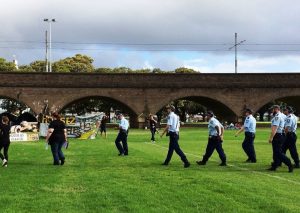
Higher production assists in reducing scarcity and petty human-vs-human squabbles. As long as such squabbles exist, the unity required for a communist society cannot be built. Higher economic development also increases the wellbeing, luxury, and convenience of the masses. Crucially, it also helps in securing our revolution. If still existing capitalist countries outperform the socialist state this may lead them to being able to militarily or economically undermine the revolution.
 Will the masses rise to the productive tasks required to improve the lives of the community in the new revolutionary society? Under capitalism it is typically only the technical and middle class layers who are motivated to be innovative in production as they hope this will help them climb up the capitalist ladder. For working class people under capitalism the main driving force that makes people productive in their jobs is the fear of sackings by the greedy capitalists which will leave them without a means of survival. How will the masses be motivated to be productive in a socialist society where they are guaranteed jobs and a decent livelihood?
Will the masses rise to the productive tasks required to improve the lives of the community in the new revolutionary society? Under capitalism it is typically only the technical and middle class layers who are motivated to be innovative in production as they hope this will help them climb up the capitalist ladder. For working class people under capitalism the main driving force that makes people productive in their jobs is the fear of sackings by the greedy capitalists which will leave them without a means of survival. How will the masses be motivated to be productive in a socialist society where they are guaranteed jobs and a decent livelihood?
Some people will be motivated to produce purely out of a sense of responsibility to serve the community. These will be people with a socialist ideological and working class consciousness. However, others without this same level of consciousness will require some level of material incentives to spur production. Practical examples of such incentives include extra wages for individuals who work longer hours and higher wages for people to join particular skilled professions where there may be staffing shortages due to work being, for example, more dangerous or because there are currently too few trained professionals in that particular field.
So, in this transition period between workers’ revolution and communism, there will be some inequality between different workers. Of course, this inequality is nothing like under capitalism where the main inequality is not between different workers but between all the workers and the capitalist exploiters of workers. Nevertheless, some people in the new, revolutionary society will object to even a limited degree of inequality for, after all, the revolution was made partly in the name of equality. Therefore, it will take a state – a workers’ state run by the revolutionary workers – to administer and control this unfortunate albeit socially necessary and transitory inequality.
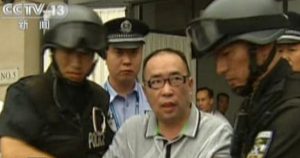
We should, however, not be naïve. Even transitory inequality can be dangerous to a revolutionary society. For one, it could give the better paid workers a taste of privilege and thereby encourage in them capitalist restorationist tendencies. It is also potentially corrupting for the workers’ state to be defending inequality at all. Therefore, the party must play a key role in explaining to the masses the complex tasks of production in the post-revolutionary society and the vigilance required to be on guard against capitalist restoration. The workers’ party must also make extra efforts to unify the masses to ensure that the inevitable degree of division that economic inequality between workers brings is minimised as much as is possible. Furthermore, the more inequality there is in this transitory period, the more the workers’ state must be vigilant to crush signs of any capitalist restorationist tendencies.
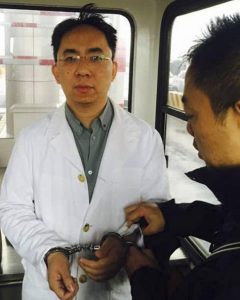
As the socialist system enables more and more of the masses to upgrade their skills, and with workers now knowing that their labour and innovative ideas will be used for their own good as well as their comrades’ (rather than under capitalism where all their efforts only serve to help their capitalist exploiters get even richer) work itself will become more rewarding and pleasurable. Soon a more advanced communist society will start to remove individualistic tendencies and replace them with a communist motivated spirit where workers are proud that their labour is used to serve the community.
This then helps pave the way for the workers’ state itself to wither away as society marches towards communism.
Withering Away of the Workers State
Humanity will awaken to a new future after the socialist revolution.
The backwardness of society that has existed for over a thousand years will start to be radically challenged. But the progress to communism is not an instant task. Communism and the stateless society will need to be facilitated by the workers’ state and workers’ democratic authority.
What will be the conditions that facilitate the workers’ state to actually wither away (because there ceases to be a need for one) and a fully communist society – where there is no state – to emerge?
Firstly, not only must the resistance of the overthrown capitalists be totally defeated to the extent that they no longer attempt to undermine the revolutionary society but there must also be no threat from capitalist restorationist forces from abroad. This, in turn, presupposes that capitalist rule has been overthrown in all the richest and most powerful countries of the world.
Secondly, class differences will need to be eradicated and full equality based on abundance for all will need to be achieved to the extent that we can have the realisation of the ideal: “From each according to her ability, to each according to her need”. Achieving this ideal implies that there is growing collective wealth and that resources are so well allocated that the full productive and creative potential of individuals can be harnessed. When class differences and scarcity are eradicated then the state can wither away because there is no longer a class that needs to be suppressed.
To fully reach the stage of communism, the inequality that exists between workers in the manual work and the technical realm must also be overcome. In capitalist society, the manual workers often get lower pay and have less opportunities but with socialist rule and development, this inequality and isolation will be gradually removed through massively expanding training and education opportunities for the masses. Everyone will then, in communism, become a highly skilled technical or artistic worker while each and every worker will also do an equal share of the more monotonous and tiring tasks (the number of which will continue to be drastically reduced due to advancing technological and scientific innovations which, under communism, will benefit all workers).
Another essential requirement for reaching communism will be that the old bourgeois traditions be fully eliminated. This will allow Communism to be realised where individuals that compose the masses manage their own community affairs with a self-determined community motivated spirit and culture without the need for a guiding workers’ state.
Social democrats and other ignorant apologists for the capitalists don’t realise that the capitalist state is an oppressive and freedom-killing institution. The workers’ state is the opposite. It does, in fact, calls for its own dissolution but only at that point in time when it has succeeded in helping rid society of backward capitalist traditions and in engaging all the masses in the administration of society to such an extent there is no one left to administer. The role of the councils and the community bodies will then pass over from the administration of people to the administration of things.
This will be the ultimate stage of communist society. It is a future worth fighting for. Workers of the world unite!
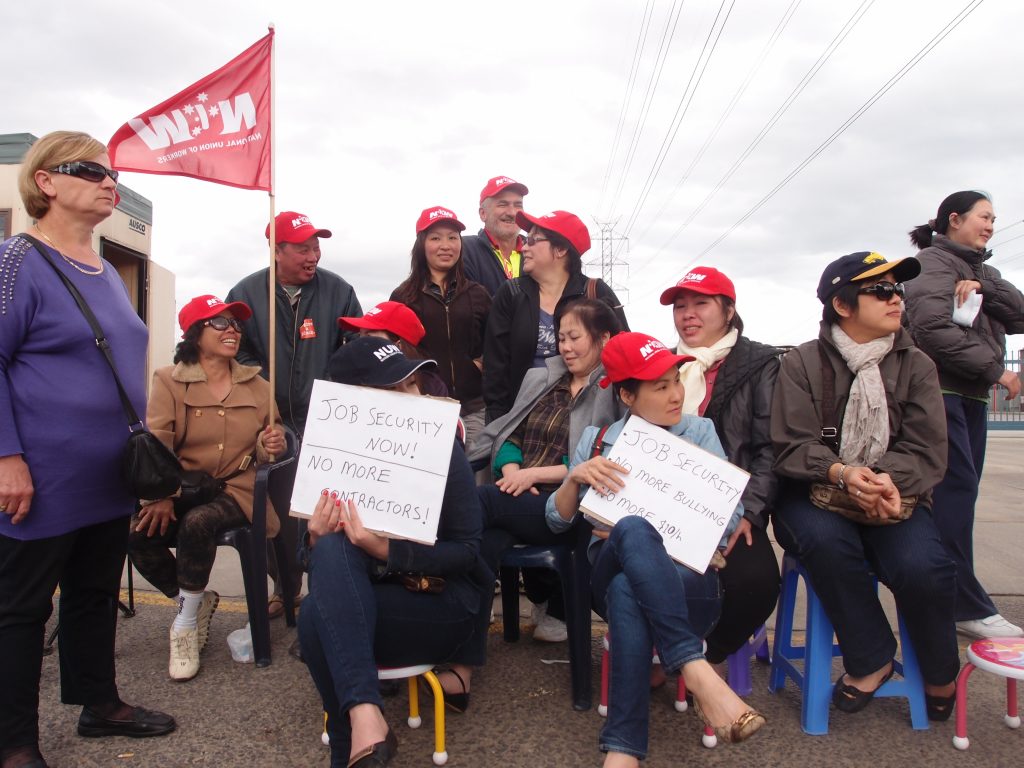
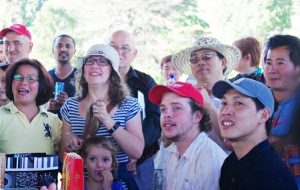
Footnotes:
28.
Lenin writes in The State:
But there was a time when there was no state, when general ties, the community itself, discipline and the ordering of work were maintained by force of custom and tradition, by the authority or the respect enjoyed by the elders of the clan or by women—who in those times not only frequently enjoyed a status equal to that of men, but not infrequently enjoyed an even higher status—and when there was no special category of persons who were specialists in ruling. History shows that the state as a special apparatus for coercing people arose wherever and whenever there appeared a division of society into classes, that is, a division into groups of people some of which were permanently in a position to appropriate the labour of others, where some people exploited others.
“And this division of society into classes must always be clearly borne in mind as a fundamental fact of history. The development of all human societies for thousands of years, in all countries without exception, reveals a general conformity to law, a regularity and consistency; so that at first we had a society without classes—the original patriarchal, primitive society, in which there were no aristocrats; then we had a society based on slavery—a slaveowning society. The whole of modern, civilised Europe has passed through this stage—slavery ruled supreme two thousand years ago. The vast majority of peoples of the other parts of the world also passed through this stage. Traces of slavery survive to this day among the less developed peoples; you will find the institution of slavery in Africa, for example, at the present time. The division into slaveowners and slaves was the first important class division. The former group not only owned all the means of production—the land and the implements, however poor and primitive they may have been in those times—but also owned people. This group was known as slave-owners, while those who laboured and supplied labour for others were known as slaves.
This form was followed in history by another—feudalism. In the great majority of countries slavery in the course of its development evolved into serfdom. The fundamental division of society was now into feudal lords and peasant serfs. The form of relations between people changed. The slave- owners had regarded the slaves as their property; the law had confirmed this view and regarded the slave as a chattel completely owned by the slave-owner. As far as the peasant serf was concerned, class oppression and dependence remained, but it was not considered that the feudal lord owned the peasants as chattels, but that he was only entitled to their labour, to the obligatory performance of certain services. In practice, as you know, serfdom, especially in Russia where it survived longest of all and assumed the crudest forms, in no way differed from slavery.
Further, with the development of trade, the appearance of the world market and the development of moneycirculation, anewclassarosewithin feudal society—the capitalist class. Fromthe commodity, the exchange of commodities and the rise of the power of money, there derived the power of capital. During the eighteenth century, or rather, from the end of the eighteenth century and during the nineteenth century, revolutions took place all over the world. Feudalism was abolished in all the countries of Western Europe. Russia was the last country in which this took place. In 1861 a radical change took place in Russia as well; as a consequence of this one form of society was replaced by another—feudalism was replaced by capitalism, under which division into classes remained, as well as various traces and remnants of serfdom, but fundamentally the division into classes assumed a different form.
The owners of capital, the owners of the land and the owners of the factories in all capitalist countries constituted and still constitute an insignificant minority of the population who have complete command of the labour of the whole people, and, consequently, command, oppress and exploit the whole mass of labourers, the majority of whom are proletarians, wage-workers, who procure their livelihood in the process of production only by the sale of their own worker’s hands, their labour-power. With the transition to capitalism, the peasants, who had been disunited and downtrodden in feudal times, were converted partly (the majority) into proletarians, and partly (the minority) into wealthy peasants who themselves hired labourers and who constituted a rural bourgeoisie.
This fundamental fact—the transition of society from primitive forms of slavery to serfdom and finally to capitalism—you must always bear in mind, for only by remembering this fundamental fact, only by examining all political doctrines placed in this fundamental scheme, will you be able properly to appraise these doctrines and understand what they refer to; for each of these great periods in the history of mankind, slave-owning, feudal and capitalist, embraces scores and hundreds of centuries and presents such a mass of political forms, such a variety of political doctrines, opinions and revolutions, that this extreme diversity and immense variety (especially in connection with the political, philosophical and other doctrines of bourgeois scholars and politicians) can be understood only by firmly holding, as to a guiding thread, to this division of society into classes, this change in the forms of class rule, and from this standpoint examining all social questions— economic, political, spiritual, religious, etc.
From The State: A Lecture Delivered at the Sverdlov University. Lecture written by V.I Lenin & delivered on 11 July 1919. First published: Pravda No. 15, 18 January 1929. Source: Lenin’s Collected Works, 4th English Edition, Progress Publishers, Moscow, 1972 Volume 29, pages 470-488. Translated: George Hanna. Copyleft: V. I. Lenin Internet Archive (www.marx.org) 2002. https://www.marxists.org/archive/lenin/works/1919/jul/11.htm
29.
The proletariat originally arose from many Some were freed serfs. Others were journeymen and apprentices – an oppressed class of artisans oppressed by the guild masters – who went into the new manufacturing and industrial enterprises in search of better pay and often simply employment as the new industries were then undercutting the guilds. Later the guild masters – who were a small-scale exploiting class – found that they too had to join the proletariat as their operations were ruined by competition from the more efficient large industries. Of course, there were classic petit bourgeois who became proletarians – tradesmen, shopkeepers, peasants. Some who joined were also former members of the landowning nobility. With the breakdown of feudalism and the bourgeois revolution these nobles no longer had serfs and peasants to provide for them and ended up having to work as exploited workers to make a living.
There are many national variations to this. In the South of the U.S.A, for example, a good part of the proletariat were/ are liberated former black slaves. In Australia, the proletariat has a particularly diverse background. Ironically, until they were granted equal pay as white workers, Aboriginal workers – that is, members of an egalitarian so-called “hunter-gatherer” society who were brutally denied access to the land that they had for millennia occupied (not “owned” as the concept of ownership was foreign to their society) – were the backbone of the rural proletariat working as stockmen, shearers, pickers, cotton chippers etc. This rural proletariat was supplemented by “Kanaks,” people from places like Vanuatu, Solomon Islands, PNG and New Caledonia who were kidnapped (“blackbirded”) by Australian slave hunters and brought to work as indentured plantation workers in Australia – especially in the sugar plantations of Queensland. Later these workers became “free” labour. Then there were the ex-convicts who became workers – that is, we can say ex-members of the lumpenproletariat. There were, of course, petit bourgeoise who were driven into the proletariat class – for example, gold prospectors once the gold rush was over. Australia’s working class – especially the industrial proletariat – is disproportionately made up of migrants and their descendants – that is, of European and later Middle Eastern migrants arriving after WWII and then coloured migrants after the formal relaxation of the White Australia Party. All these migrants came from different backgrounds. Some were workers in their original countries, others were farmers and shopkeepers. Some were former members of the exploiting class. These included people fleeing countries where the former ruling bourgeois faction has been deposed by a rival bourgeois faction – such as in Iran and Iraq. It also includes former members of the landlord and capitalist class running away from anti-capitalist revolutions in places like China, Laos and Vietnam. Former members of the deposed exploiting class in Vietnam and their henchmen are heavily concentrated as workers in the manufacturing and warehouse sectors of Sydney and Melbourne. Then there are the many henchmen of the capitalists who after WWII fled – from the Baltic states, Poland, Hungary, Czechoslovakia, Ukraine, Russia and Croatia – the victorious Red Army or the Yugoslav Revolution. The highest ranked of these anti-communists got well-paid positions assisting ASIO but most ended up becoming ordinary workers. So there we have the Australian working class’ diverse class background: former members of an egalitarian hunter-gatherer society, former “blackbirded” slaves, petit bourgeois farmers and gold prospectors, lumpen proletarian ex-convicts, overthrown capitalist exploiters and their die-hard anti-communist henchmen fleeing socialistic revolutions.
The latter includes, in the case of some of the East European and Baltic migrant workers, former members of outright fascist armies and police forces. All this underscores that there is nothing per se morally more worthy about an individual proletarian over an individual petit-bourgeois person. That is hardly the point. The point is that by its relationship to the relations of production the proletariat as a whole uniquely has the power, interest and potential consciousness to lead the struggle against capitalism and for socialism. Furthermore, the proletariat’s position in the relations of production and its means of deriving an income give it the opportunity to break free from attachment to private property and to develop a consciousness of solidarity with fellow toilers regardless of which class the proletarian or her/his ancestors may have derived from. Ironically, to see this question from a standpoint that puts the overall struggle for the liberation of humanity at the forefront rather than an individual judgemental type analysis itself requires a proletarian outlook as opposed to the individualistic bourgeois/petty bourgeois analysis that our whole upbringing in capitalist society conditions us to examine political questions with (in a similar way that our conditioning in capitalist society drives us to, when we analyse political events, excessively focus on the personalities and policies of individual political leaders/activists rather than the conflicts between classes and the struggles/contradictions between sections of classes).
30.
In checking the Australian Bureau of Statistics (ABS) figures there are grey areas in how the figures are presented and also some grey areas about where to classify certain people. Nevertheless, it is apparent that the petit bourgeois make up from 15% to 23% of the Australian workforce. (The small-scale capitalist exploiters make up 3% to 4% of the workforce.) Comrades may find how these figures can be calculated interesting: Firstly, looking at the petit bourgeois, from http://www.abs.gov.au/AUSSTATS/abs@.nsf/ProductsbyTopic/A8CAED8E5F9FB2E1CA257F1F00044E8C?OpenDocument (accessed 21 March 2016), it is apparent that there are 307,100 + 951,800 self-employed people, i.e. 1,258,900 self-employed people.
Additionally. some of the people who are employees are still part of the petit-bourgeois. Unfortunately and rather strangely, the ABS when breaking down occupations lumps in employees and owner-managers of incorporated enterprises into one group rather than listing them separately. But looking at the ABS spreadsheet for the breakdown of occupations in incorporated enterprises, we find that there are 584,000 people working as business, human resource and marketing professionals. Due to the closeness of many of these employees to the bosses and the nature of their work which, rather than the production of goods and services, often involves strategizing on helping the bosses maximise profits, many should be classed as petit-bourgeois rather than proletarian. Of course, not all these employees would fit such a description – lower level employees collating market research data should be counted as part of the proletariat. So we can at a very rough guess count 60% of these employees as petit bourgeois. But given that there are, additionally, professionals in other occupation types that we are not counting as petit bourgeois who should be, then if we take all these 584,000 as petit bourgeois then that would make up for all these others. These would include highly skilled professionals working in the public sector who, because society compels the government to provide certain basic services, the government is compelled to pay high salaries in order to ensure that the services are provided. Therefore, these people are not denied the fruits of their labour – but neither are they bourgeois exploiters. In this category would include town planners, senior civil engineers working for state and local government, staff specialist doctors at hospitals etc.
So, in total, taking 584,000 of those among the employees and owner-managers of incorporated enterprises as petit bourgeois we now have to deal with the issue of double counting since some of these may have already been included in the 307,100 people working as self-employed owners of incorporated enterprises. Therefore, we should scale this number by the ratio of the people in the employees and incorporated enterprises category who are not self employed divided by the total number of people in the employees and incorporated enterprises category. This ratio is 97%, i.e. (9,585,100 + 499,900)/(9,585,100 + 806,600). That means our estimate for the number of employees that should be added to the petit bourgeois category is 97% x 584,100 = 566,577.
Another group of people given in the ABS breakdown of occupations for people listed as being either employees or owner-managers of incorporated enterprises that should be classed as petit bourgeois is a proportion of the 1,257,800 people listed as managers. Most of the managers should be classed in the category of henchmen/enforcers of the capitalists. However, some of the people classed as managers are really leading hands without the power to fire or to deny workers leave and others are managers of things rather than people. We can estimate that say 25% of people listed as managers fall in this category. So, therefore, the number of managers who can be counted as petit bourgeois is 25% x 1,257,800 = 314,450. Now, some of these people may already have been counted in the self-employed category and we would expect the proportion of managers to be higher than the 3% (i.e, 100% – 3%) average for people in the employees or owner-managers of incorporated enterprises category. So we assume that 20% are double counted, i.e, 80% of the 314,450 managers (i.e. 251,560) considered petit bourgeois rather than bourgeois henchmen should be added to the petit bourgeois category.
There is one other group that should, perhaps, be added to the petit bourgeois category. This comes about due to a certain grey area among a small percentage of the people who are small scale employers. Most of the people employing one to four people are in fact small scale capitalist exploiters who derive their income from a combination of business conducted that’s based on their own labour as well as that of their workers. These include restaurant/ café owners hiring chefs/service staff, plumbers and electricians with their own business hiring a couple of (always terribly paid) apprentices, auto repair shop owners with a couple of hired workers etc. In all these cases, the hired workers contribute much to directly producing the goods or services that are being sold. The bosses deny the workers the full fruit of their labour (and when this is not the case it is not because the boss does not intend to but because there is not enough business for the boss to get full use out of the workers). Additionally, these bosses often treat their workers arrogantly and rudely. However, there is also a category of small-scale employers where the hired workers are not directly engaged in producing the goods/services being sold. These would include architects, dentists, doctors, accountants and solicitors with their own private practice and hiring an office manager/receptionist or two. Unlike, say, with the café owner hiring a service worker, in this case making the receptionist work longer hours for the same pay will not necessarily increase the owner’s profits. The profits and often high income of the business owner depends largely on the architect/doctor etc being able to get away with charging the client/patient high fees. So, in this sense, these type of business owners are petit-bourgeois rather than small-scale capitalists. On the other hand the work that the receptionist/office manager performs is crucial to the successful operation of the business and the often massive disparity in income between the business-owning professional and the receptionist/office manager shows that there is some degree of the worker being denied the fruits of their labour and thus not being adequately paid. So these business-owning professionals are really in a grey area between being petit bourgeois and being small-scale capitalist exploiters. However, many of them are probably closer to being petit bourgeois than small scale capitalists so for classification purposes could probably be classed as petit bourgeois.
So now for our numbers, we need to estimate what percentage of all the small-scale employers are business owning professionals hiring only one or two office staff (who are the only people working in the business in addition to themselves and possibly other professionals in a partnership). A guess would be 25%. We then need to know the total number of people owning businesses with only a very small number of hired workers. This page from the ABS – http://www.abs.gov.au/ausstats/abs@.nsf/mf/8165.0 (accessed 21 March 2016) – indicates that 27% of all businesses have one to four employees (note: ignore the total number of businesses from this page as many business owners own more than one business). So, knowing that there are 806,900 + 1,191,200 = 1,998,100 business owners and assuming that this 27% ratio applies roughly to business owners in addition to applying to the total number of businesses, the number of business owners hiring from one to four employees is 27% x 1,998,100 = 539,487. Then, taking our estimate of 25% as the percentage of these business owners who are in a grey area where they probably should be categorised more as petit-bourgeois than small-scale capitalists, the number of these petit-bourgeois business owners = 25% x 539,487 = 134,872.
Therefore the total number of petit bourgeois = 1,258,900 + 566,577 + 251,560 + 134,872 = 2,211,909. This represents a 2,211,909/11,583,900 ratio, i.e. 19% of the workforce.
As for the small-scale capitalist exploiters, they would make up the remaining 75% of the bosses hiring between one to four workers who cannot be classed as petit bourgeois, i.e. they number 75% x 539, 487 = 404,615. That is, they make up 404,651/11,583,900 ratio, i.e. 3.5% of the workforce.
Now the medium and large scale capitalist business owners would be the total number of business owners minus those that have no employees less those that employ from one to four workers. That would be 1,998,100 – 1,258,900 – 539,487 = 199,713. This is 199,713/11,583,900 ratio, i.e. 1.7% of the workforce. Many managers are also substantial shareholders of businesses where they are not necessarily the main owners. However, it is hard to estimate this. It is easier to simply lump in the big and medium bourgeois and their henchmen as one.
So the managers who could be counted as bourgeois henchmen or straight bourgeois are those who cannot be counted as simply petit bourgeois, i.e. we have estimated that 25% can be counted as petit bourgeois so 75% of the managers can be estimated to be bourgeois or bourgeois henchmen. Thus, 75% x 1,257,800 = 943,350. As many of these managers, however, already have been counted as owner managers – at an estimate 30% – so 70% of the mangers not considered petit bourgeois should be added to the bourgeois class and its henchmen, i.e. 70% x 943,500 = 660,450.
Now an additional group of henchmen are cops, prison guards, secret police, volunteer army soldiers, private security, prosecutors, judges and magistrates. Judges, magistrates and prosecutors together make up a very small number. So a good estimate of the total for this category of henchmen is given under the listing in the ABS spreadsheet for “Protective Service Workers,” of which there are 140,300.
Therefore, the total for the big and medium size capitalists and their armed and unarmed henchmen/enforcers is 199,713 + 660,450 + 140,300 = 1,000,463. This is a ratio of 1,000,463/11,583,900 = approx. 8.5% of the workforce.
So, in summary the estimates are: big and medium size capitalist exploiters and their henchmen form 8.5% of the workforce, small-size capitalist exploiters 3.5%, petit bourgeois 19%; proletariat and semi-proletariat (including the better paid highly skilled/educated workers) make up the rest, which is 69% of the workforce.
To put it in easy to remember terms: in Australia roughly seven in ten people in the workforce are the proletariat/ semi-proletariat, one in five are the petit-bourgeois and one in eight are the capitalist exploiters and their henchmen/ enforcers.
